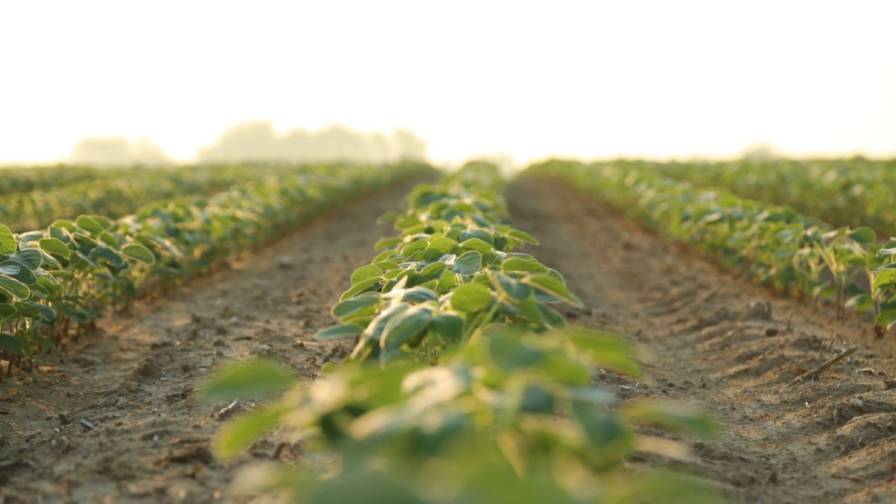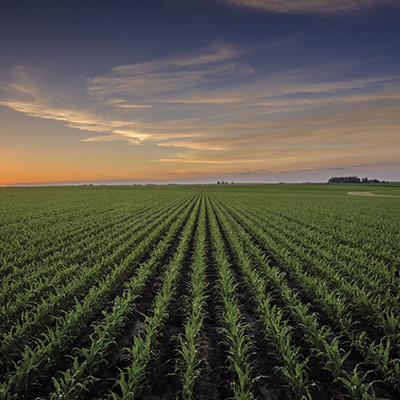Irrigation Control Gets Ever More Precise

Increases in grower acreage and advances in remote control technology have helped fuel irrigation system improvements.
As more regions of the country struggle with water conservation and off-site nutrient movement, growers are looking for ways to control inputs better. One clear place to start is controlling irrigation water more carefully. How much land could improvements here affect? The 2013 Farm and Ranch Irrigation Survey reports about 30.5 million acres in the U.S. are irrigated with mechanized systems, 26.6 million acres with surface (flood) systems and 4.05 million acres with drip/microirrigation.
Increases in grower acreage and advances in remote control technology have helped fuel irrigation system improvements.
“Growers get to a certain scale where they have multiple machines and it becomes more difficult for them to cover the ground and actually interact with the panels at the pivot center. Adoption rates are higher among those who have 10-plus pivots, and we have some arrays that are approaching almost 700 machines connected to a single BaseStation,” says Andy Smith, director of technology adoption with Valley Irrigation.
Valley has offered products that provide remote interaction via a computer for going on 30 years, says Smith. But the company recognized that some technology in the field was getting “beyond its time,” and so created the new BaseStation3. Released just over a year ago, the system features Valley’s most current generation of software to do remote management, monitoring and control.
Smith says the BaseStation line has a significantly longer shelf life than other technologies because it’s built on licensed private radio versus cellular networks, which encounter ongoing, sometimes disruptive, updates.
Costs for installations can be hard to estimate. Very specific designs can be needed for each location. Valley begins with doing a site survey of the farms to see what it’s going to take to get a radio signal from the central base station out to the pivot itself. Sometimes repeaters are needed to make one pivot talk to the next pivot.
Valley Irrigation has also developed a new product called Irrigation Exchange. It’s a suite of application programming interfaces (APIs) that allow software to talk with other programs via some form of connectivity. “We can provide information about how much water was applied, where it was applied and when and share that back and forth across various agronomic software systems. Then we can actually teach those systems to write recommendations that BaseStation3 can consume and execute,” says Smith.
He hopes BaseStation3 will further consolidate the growers’ need to interact with multiple systems. Valley’s research showed that some farmers are using as many as 25 different pieces of software to run their farm.
Valley offers a number of irrigation control options. BaseStation3 is well suited for an operation that has similarly equipped pivots. Generally, Field Commander and TrackerSP are good for the grower that has a wide variety of pivots.
Trimble Irrigate IQ is a GPS-controlled system installed on the pivot and enables farmers to remotely control their irrigators by accessing the cloud-based Irrigate-IQ software on a desktop or laptop computer, rugged mobile computer or tablet. Options range from straightforward control of the irrigator to creation of no spray or variable rate spray areas down to the individual nozzle.
Reinke Manufacturing’s most popular brand in irrigation controls is its Ontrac product family. One Ontrac unit, Ontrac Satellite Plus, integrates into Reinke’s Touch Screen control panel providing the ability to remotely monitor and control the system in places where cellular signal may be weak, and there is challenging terrain for a radio network. The panel is actually an industrial computer with, as Bailey notes, the largest touch screen in the industry and stylized buttons that make the system very easy to control. On-screen folders, files and menus are not needed. “In fact, we saw a very large increase in sales with that particular product because of the user-friendly interface,” Bailey says.
The panels can be programmed separately, but the data can all be collected through a centralized location — a base station — that can talk to hundreds of machines if needed. That station, often located in an office, is the growers’ portal into the Web where they can access information and control machines. The work can also be done through a mobile device.
Bailey tells of one very large grower with more than 100 machines that uses Ontrac. With it, the farm now only needs two managers to handle irrigation. “It’s just amazing. It’s changed their business,” he says.
Ontrac systems are available that utilize radio, satellite and most recently, cellular signals to communicate.
Lindsay’s just-released FieldNET Pivot Control upgrades almost any brand and age pivot controller to in-field and remote irrigation control and monitoring capabilities. “You can take a 30-year-old pivot and bring it right up to date with this unit,” says Colorado grower Jared Gardner, who tested the product on his Zimmatic pivot and two competitor brands. “You can put this on anything. Now I can have everything under one roof,” he says.
In general, Lindsay Irrigation has seen tremendous interest and use of its FieldNET wireless irrigation system, says Kirk Biddle, vice president of sales. It allows growers to monitor and control their pivots, water pumps and other irrigation plug-and-play add-ons from virtually anywhere. “Our largest user has 350-plus devices on a single set-up,” he says.
When the system is integrated with Lindsay’s Growsmart family of sensors, including soil moisture and rainfall sensors, the user can see all the water which has been delivered to the plants (rain or irrigation) and how much water is available in the soil. Such visibility enables farmers to make more informed irrigation decisions.
Texas grower Steve Chapman has used FieldNET with Multi-Control and Growsmart sensors; the two combined can manage both his drip and pivot irrigation. Chapman had been driving 50 miles every day, spending two hours checking pivots on 600-700 acres. Several years ago, he put FieldNET on them. “Now I wake up, look at the computer and see if there are any problems with any of our pivots and know exactly where to go.”
Precision Point Control III is T-L Irrigation’s most popular system, and coupled with AgSense Precision Link, it allows control of a host of functions from any Web-based device. The company has a number of other control products including Point Control, Pivot Manager II, Precision Linear Control II and most recently, Corner System GPS Navigation (which offers GPR RTK sub-inch accuracy).
Major Problem Solved
If there’s one problem remote control of irrigation solves, it’s unnecessary — and wasteful — applications of water. Net Irrigate offers a simplified solution for monitoring and control functions, says Julie Upchurch, director of sales. Most recently, the company incorporated a virtual shutdown time into its remote monitoring devices PivotProxy and PumpProxy. The software update allows a grower to set a timer on Net Irrigate’s software platform through the Web or mobile device, then the timer automatically shuts down the pivot and/or irrigation pump. The product has become especially popular among PumpProxy users in flood-irrigated fields. The feature saves farmers a trip to each pump around the field to shut off watering.
The system will also notify growers when the pump shuts down (unexpectedly or on purpose) via call, text or email alert. “The update has given farmers huge energy and water savings by preventing unnecessary pumping time,” explains Upchurch.
Valley’s Smith describes another scenario: When a grower is awakened by an unexpected thunderstorm in the middle of the night. “It takes a lot of motivation to get out of bed and get in your truck to go shut down pivots all over the place,” he points out. “If you could grab your smartphone lying next to your bed and execute a farm-wide shutdown command, imagine how much water that could potentially save.” Plus, there’s the impact of an already-fertilized field hit with a thunderstorm event and preventing all that nutrition in the field becoming more mobile than it should be.
Drip Perspective
Center pivots are not the only systems with advanced controls. Drip irrigation is a very versatile technology used in a large variety of tree and field crops, in projects ranging from five to 3,000 acres. The controls used here need to be much more diverse than those for typical center pivot systems, says Ze’ev Barylka, director of ag sales and marketing at Netafim.
The company’s real-time, Web-based monitoring solution uManage can control irrigation scheduling as well as fertilization. In fact, it also handles planning, monitoring and analysis for crops. NMC Pro System Manager is designed for very large acreages. It is teamed with Netafim’s radio-based platform, RadioNet, which utilizes Remote Terminal Units (RTUs), radios and software that provide continuous wireless monitoring and long-distance control.
In general, “our market is moving to radio control; customers don’t want to run wires to control valves or other devices,” says Barylka. He adds that soil monitoring and fertigation are becoming big needs, and Netafim carries the proprietary hardware and software to meet them. “We are being approached by many companies that desire to interface with our systems, and we are reviewing each opportunity to provide farmers with greater control,” he says.
While drip irrigation is in demand in water-challenged areas in the West, Great Plains and Texas, Barylka says its benefits go beyond saving water. “It better controls many variables that ultimately affect a crop’s yield, and we are deploying systems across the nation, regardless of water issues,” he says.
Lindsay has released the Growsmart Multi-Control, a wireless control system for low volume irrigation such as drip (with above and below ground tubing), emitters, micro sprays and sprinklers. Its interface utilizes smartphone and tablet apps or Internet browsers instead of keypads and LCD screens employed with traditional irrigation controllers. The Multi-Control works with Lindsay’s FieldNET.
Texas grower Chapman says he plants a certain percentage of his acres in milo early and cotton late, so there’s a short time frame when he’s watering both crops. Lindsay Irrigation’s FieldNET with Multi-Control allows him to write programs for his pivot and drip irrigated crops that fit the water needs of a specific crop at a specific time. “There are a lot of farmers that don’t know or understand the technology is available to them,” he says.
Retailers’ Role
Irrigation manufacturers see ag input retailers playing a part in use of the new control technologies. For instance, injectable fertilizer (especially micronutrients) applied through the pivot can be recommended and supplied by dealers. Valley’s Smith says they can also help equipment firms by suggesting improvements to software.
Then too, custom applicators may need to track irrigation equipment and timing. The last thing anyone would want is applicators or nurse tanks sent to a field mid-irrigation — or simply have sprinklers in the way. In addition, irrigation done shortly after a foliar fertilizer application means “we’ve just basically washed everything off the plant. From the stewardship perspective, if we keep the water where it belongs then we’re going to keep all of those other elements where they belong as well,” Smith says.





